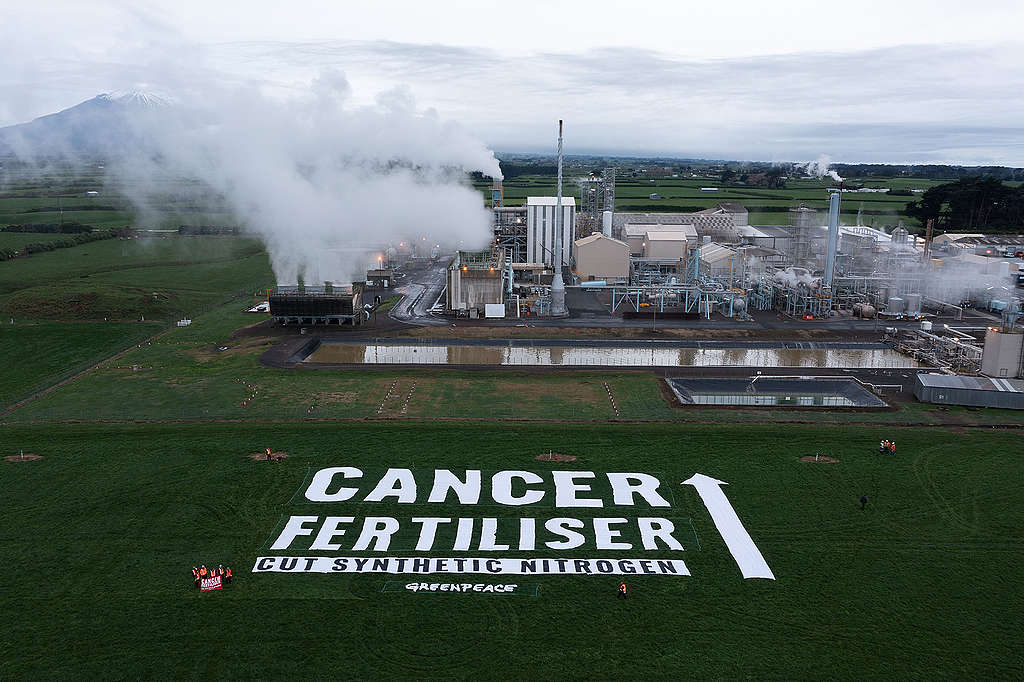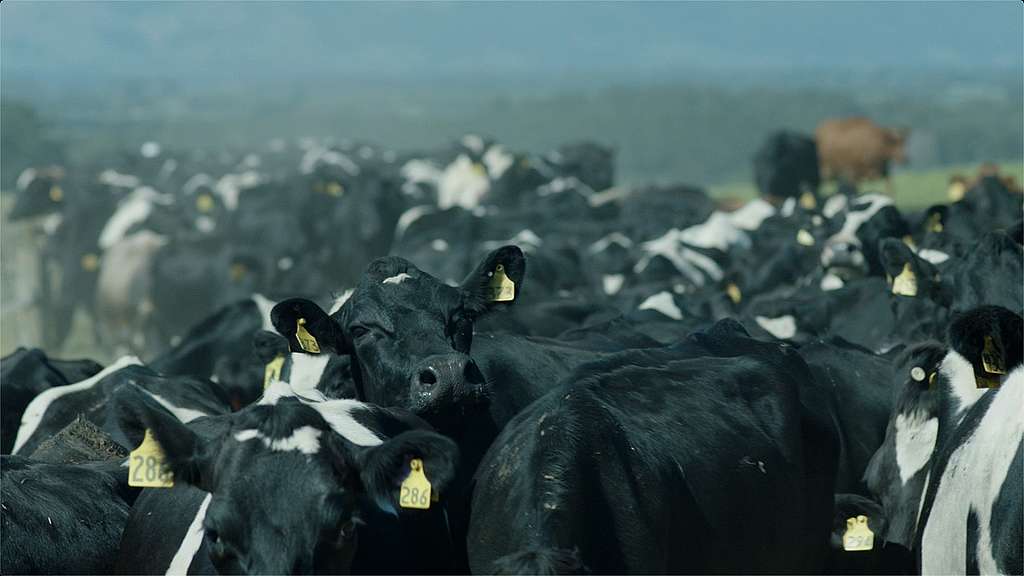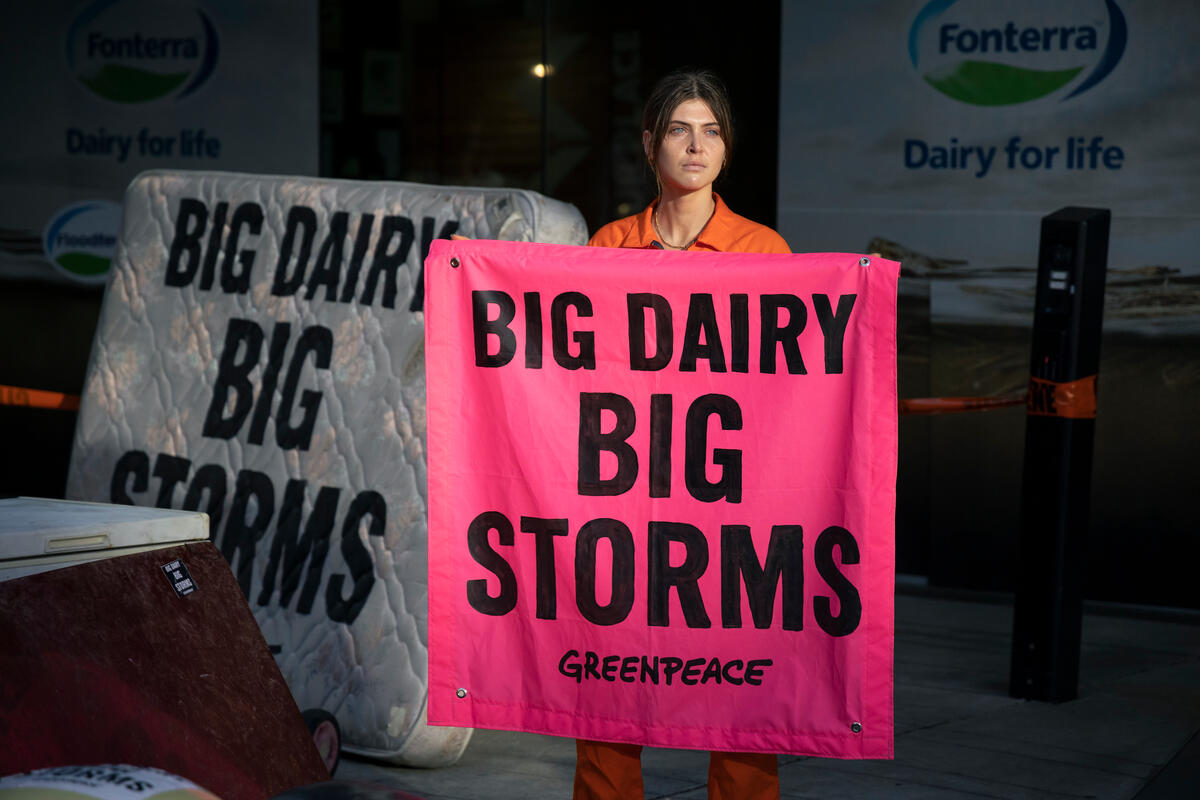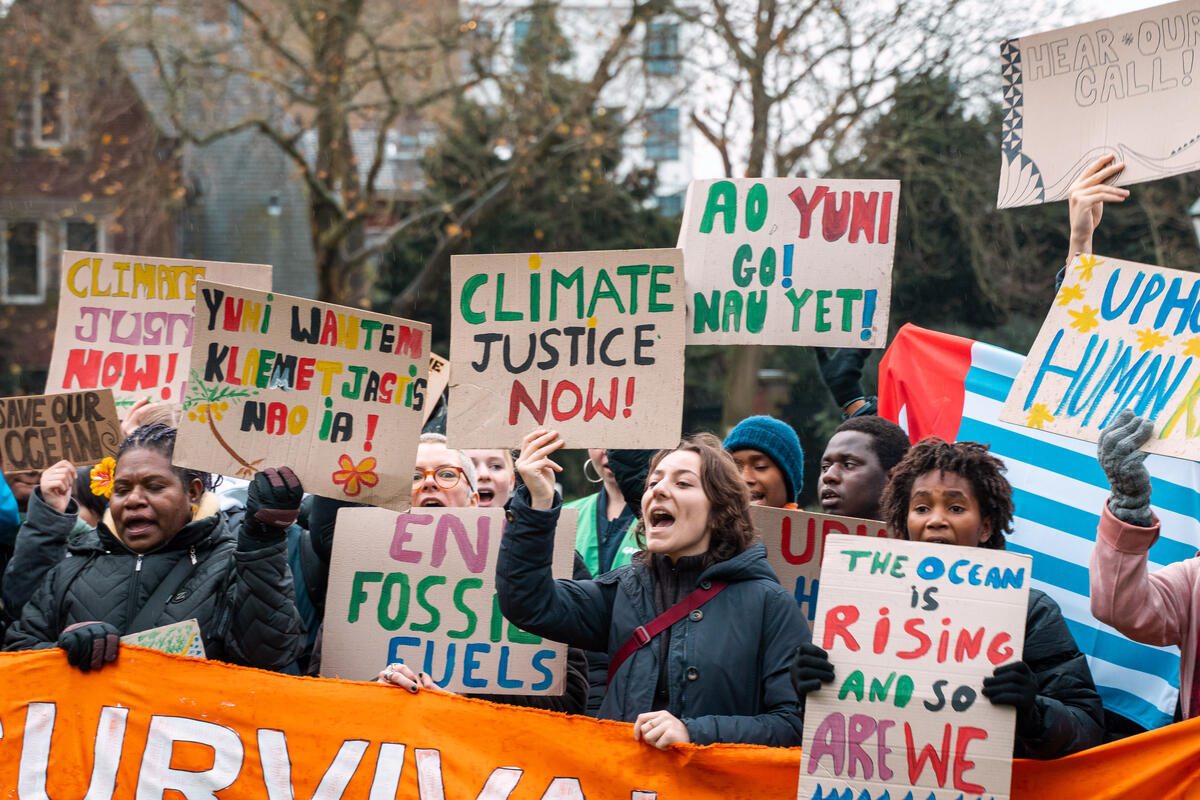Spoiler: Greenpeace is not opposed to wind turbines or green hydrogen. In fact, we support them. What we don’t support is a blank cheque for Hiringa and Ballance to produce more urea (synthetic nitrogen fertiliser) – an agri-chemical which pollutes the climate, rivers and drinking water. And we don’t support a project that disrespects the wishes of local hapū of Ngāruahine, who do have issues with the wind turbine location.
A company called Hiringa Energy is working with fertiliser corporate Ballance Agri-nutrients to expand manufacturing of urea at the Kapuni Factory in Taranaki. You may have heard that Greenpeace has taken them to Court.
Why oppose Ballance producing urea?
Urea is the primary form of synthetic nitrogen fertiliser, and to make it, you need hydrogen. For urea synthesis, hydrogen is the building block for ammonia compounds, which are used as a feedstock for urea production. In the process of making ammonia and urea, hydrogen is the most sought-after commodity because it does not freely exist in nature.
The Kapuni factory, built in 1982 under Robert Muldoon’s “Think Big” program, is the only place in New Zealand where urea is made. The dairy industry uses 63% of all synthetic nitrogen fertilisers in New Zealand (including those imported by the other fertiliser giant Ravensdown) to drive highly polluting forms of intensive animal farming.
Synthetic nitrogen fertiliser is added to the land to supercharge pasture growth so the land can be crammed with too many cows. Here in Aotearoa, it is directly responsible for more climate pollution than the entire domestic aviation industry. Synthetic nitrogen fertiliser is in large part responsible for pushing dairy farming to extreme levels of intensity – making dairying New Zealand’s most polluting industry of the land, freshwater, the climate and the marine coastal environment.
The dairy industry is New Zealand’s primary source of methane (from cow burps) and nitrous oxide (from urea and cow excreta), which are superheating greenhouse gases – cooking the climate far faster than carbon dioxide. It is also the main cause of nitrate contamination of groundwater (from cow urine and urea) which is turning rural people’s drinking water carcinogenic. If we are to solve climate change and protect our rivers and drinking water sources, we need to phase out the use of synthetic nitrogen fertiliser and significantly reduce the number of dairy cows.

That is why Greenpeace has gone to court to lock in a timeframe by which Hiringa and Ballance must switch from making polluting fertiliser to using their hydrogen for transport fuel.
Of course, agribusiness, the fertiliser industry, and the intensive dairy industry is kicking up a fuss about our case.
Greenpeace supports wind power and green hydrogen
Some twisted takes on Greenpeace’s opposition to the Hiringa and Ballance urea plant expansion say that we’re opposed to wind turbines and hydrogen fuel. But of course, we are not opposed to either wind turbines or green hydrogen, in fact, we support them.
Greenpeace is opposed to the use of green technology to greenwash a fundamentally polluting industry. We also support the right of hapū and iwi to oppose development in their rohe that they regard as inappropriate. That’s why we joined with a number of hapū of Ngāruahine to challenge the Hiringa/Ballance project in court.
Here’s the deal: Hiringa say they want to use wind energy to generate green hydrogen but to get things going, they’re first going to use the hydrogen to make fertiliser for five years, and then they say they’ll use it for transport fuel. Sounds reasonable enough. Problem is, they have no obligation to ever use hydrogen for transport fuel. They are asking us all to just take their word for it. But legally, they could just keep using the hydrogen to make polluting urea for the next 35 years. And, just so it’s crystal clear, Ballance is not a transport company. It is a fertiliser company.
But why would they keep making fertiliser from their hydrogen instead of using it for transport fuel, you might ask. Well, because the main users of industrial hydrogen are oil refining and fertiliser. While hydrogen has the potential to play a part in decarbonising our transport systems, it still faces many technical challenges and barriers to viability. Unless the consent specifies a timeframe in which Hiringa and Ballance need to switch from fertiliser production to transport fuel, we think it’s quite likely they will continue to use the hydrogen for making urea for many, many years to come.
Before the Kapuni urea plant was built, most New Zealand farming used clover to fix nitrogen in the soil. When fossil gas was discovered in Taranaki, the oil and gas industry wanted assurance that someone would buy it before investing in developing the gas fields. So Robert Muldoon built the Kapuni urea plant under the “Think Big” banner. Urea production began in earnest, but it needed somewhere to go. Within 30 years, we’ve seen a nearly 700 percent increase in the use of synthetic nitrogen fertiliser and a huge boom in dairy farming. The consequence? Polluted rivers, contaminated drinking water and a surge in climate-polluting emissions.
History tells us that the infrastructure decisions we make now will have long-term consequences. Greenpeace supports wind development and green hydrogen for transport. But if we are to have a survivable climate and drinkable water, we need to phase out synthetic nitrogen fertiliser. We certainly shouldn’t be giving the Ballance fertiliser company a blank cheque to keep making urea for another three decades. Whether it’s made by using fossil gas or green hydrogen, urea still pollutes rivers and the climate, both directly and indirectly, by driving intensive dairy farming. The climate crisis is here. People are already living with the consequences of contaminated water. We don’t have another 30 years to waste.
In court, we will be arguing that the transition to hydrogen transport fuel within five years must be a mandatory condition of the project proceeding.
We will also argue that Te Tiriti o Waitangi considerations was not properly accounted for.
Read the full submission here.
Greenpeace will be in the Appeal Court in Wellington on 23 May 2023.

Sign on now to call on the New Zealand Govt to ban chemical nitrogen fertiliser.
Take Action


